CAD REPORT Autodesk unveils its latest CAD in the Cloud strategy at annual user conference. p.10 IIOT
time-sensitive networking gets critical data delivered on time p.18 POWER TRANSMISSION BC-based manufacturer’s boat seat design reduces seafaring stress. p.21 DESIGN-ENGINEERING.COM JANUARY/FEBRUARY 2023 ENGINEERING SALARY GUIDE 2023 Randstad report reveals labor trends for Canadian mechanical engineers
How
Designing efficient systems involves much more than simply understanding a few basic principles. There is a true art to balancing the specific requirements of an application in order to achieve the desired goals in the best possible way. Help us understand the unique needs of your application and together, we’ll develop something that surpasses what any of us could have done alone.
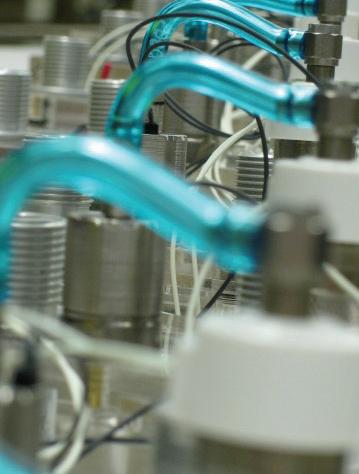
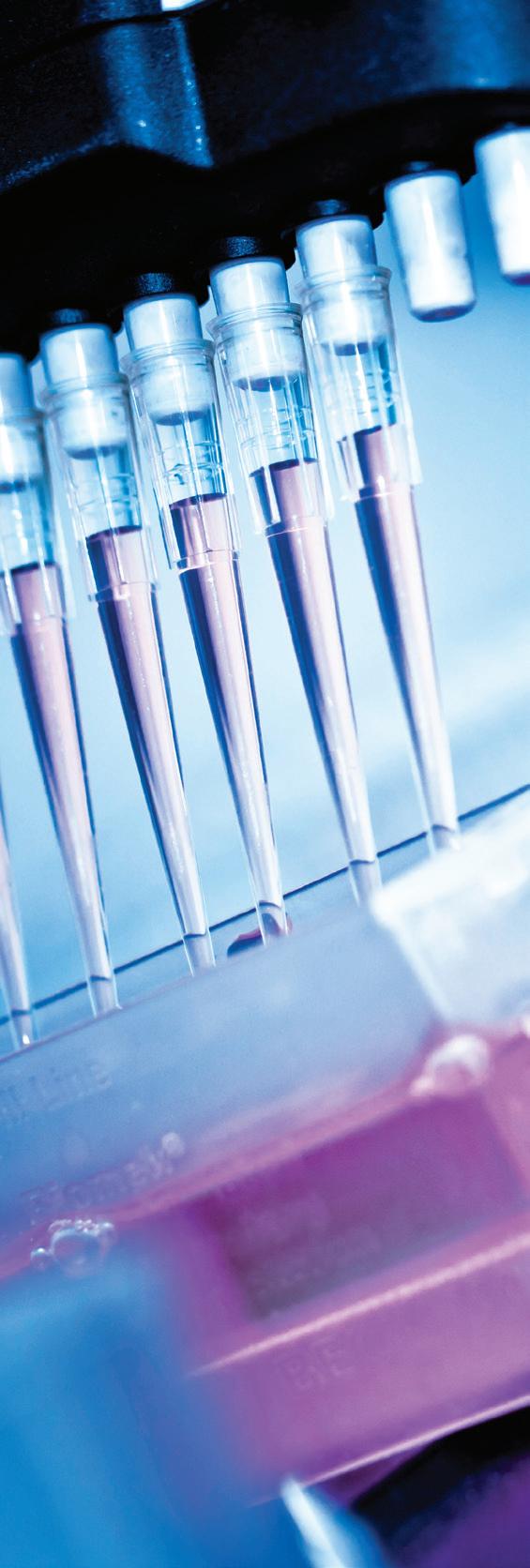


Contact




877-245-6247 CINCINNATI • BRUSSELS • SHANGHAI Electronic Valves Proportional Valves Isolation Valves Precision Regulators • Toggle & Stem Valves • Needle Valves • Electronic Pressure Controllers • Pneumatic Assemblies • Special Manifold Designs
Pneumatic Circuit Design
Cylinders • Fittings, Hose & Tubing
•
•
your
to learn more, or clippard.com to request a free catalog and capabilities brochure.
distributor
Precision Control Solutions
Columns
Vention sees explosive growth in 2022 and other engineering
Autodesk unveils its latest CAD in the Cloud strategy at annual user conference

The latest industrial technology including fluid power, motors, power transmission and sensors
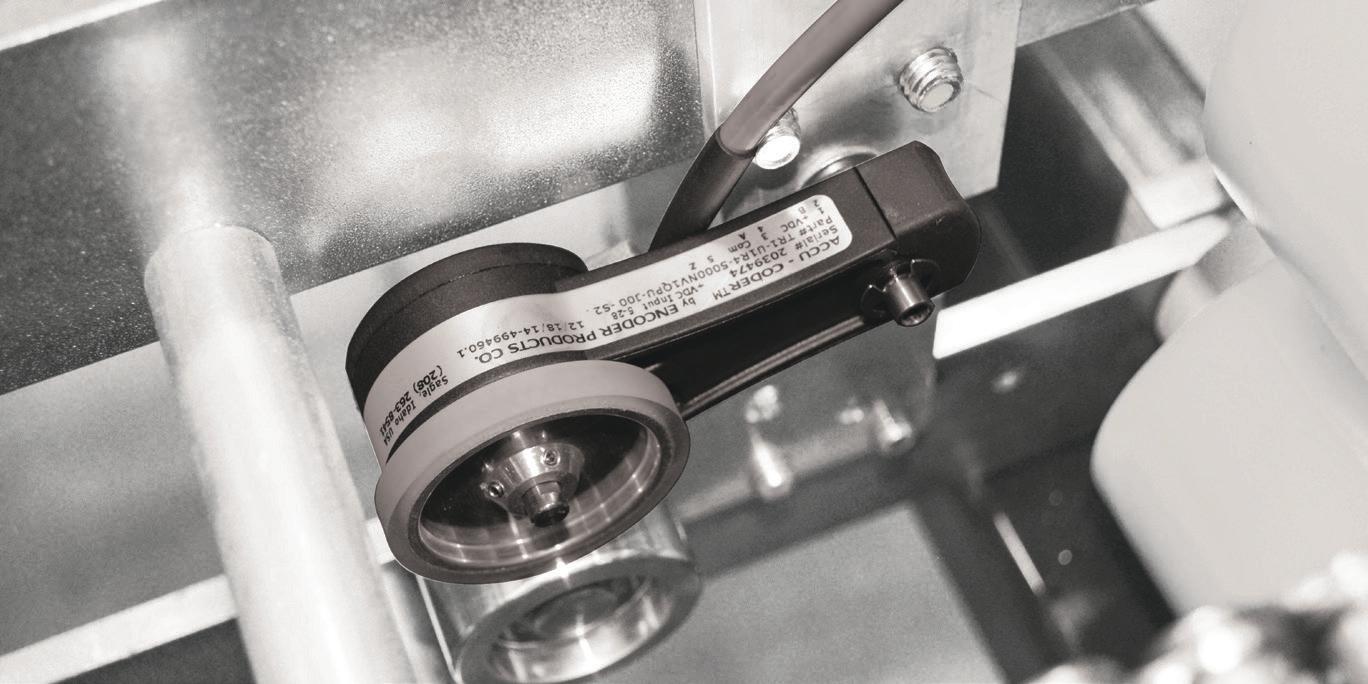

Cover photo: © sesame / DigitalVision Vectors / Getty Images INSIDE 14 Mechanical Engineering Salary Guide Randstad report reveals salary and labor trends for mechanical engineering profession across Canada. 16 A Difficult Climb Swiss railway employs industrial wireless technology to revamp world’s steepest cogwheel railway. 18 TSN in real world manufacturing How time-sensitive networking prioritizes system resources so critical data gets delivered on time. 21 Smooth Ride BC-based manufacturer’s boat seat design reduces seafaring stress.
6 Design News
news
10 CAD Report
Generator
22 Idea
14 21 18 January/February 2023 design-engineering.com Encoders provide Motion Feedback IN AUTOMATION EPC encoders provide motion feedback designed for printing, laser marking, and product inspection, and are manufactured in Idaho, USA. 1-800-366-5412 · encoder.com Get the right motion feedback for your application. Contact us today. DES_Encoder_JanFeb23.indd 1 2022-12-07 2:13 PM @design_eng_mag January/February 2023 DESIGN ENGINEERING 3
Is this the year AI clicks?
Since its release at the end of November 2022, artificial intelligence-powered chatbot, ChatGPT– the brain-child of San Francisco-based startup, OpenAI – has exploded in popularity. In the first week alone, more than a million users swarmed the chatbot’s web interface. Currently, the seven-year-old startup is valued at upwards of $29B with major backer Microsoft looking to use the technology to challenge Google for the search engine crown.
Like the introduction of the personal computer roughly forty years ago, the reaction to ChatGPT has ranged from “ushering in a new era” to “the beginning of the end.” OpenAI co-founder Elon Musk called ChatGPT “scary good” while The Atlantic designated it one of its 2022 “Breakthroughs of the Year,” and one that may challenge “what human creativity really is.”
Educators have been less enthusiastic, especially since ChatGPT passed a five-question sample from a Wharton professor’s MBA exam and law exams from four courses at the University of Minnesota. Unsurprisingly, a growing number of school districts and universities have banned its use by students.
For their part, AI researchers say OpenAI’s gadget is nothing terribly new or innovative. Short for Generative Pre-Trained Transformer, OpenAI’s GPT3 platform draws on some of the world’s largest language models. To that, it pairs deep neural networks and near limitless cloud-based computing with a machine learning technique called Reinforcement Learning from Human Feedback. This enables the platform to understand and responded in conversational language, ask follow up questions and even critique underlying assumptions. As a result, the platform’s quick uptake may be due to its ability to do practical things like write code, answer complex questions and even compose song lyrics.
As sci-fi as ChatGPT sounds, it isn’t perfect. In its present iteration, it seems to suffer from the silicon-based version of the Dunning-Kruger effect (i.e. it doesn’t know what it doesn’t know). According to OpenAI, while often surprisingly effective at a certain tasks, the AI platform will occasionally generate content that looks plausible but is, in fact, nonsense or heavily biased.
While still in its early stages, its hard to tell if AI will eventually become fool-proof enough to displace millions of jobs, as some commentators warn. Like self-driving cars, that level of sophistication is probably much harder to pull off than its worth. Ultimately, AI like ChatGPT will become another tool, like the calculator and PC before it, that allows one part of our collective mental capacity to atrophy while freeing time to develop and strengthen others.|DE
MIKE MCLEOD
Editor
mmcleod@design-engineering.com
Editorial Board
DR. ALAIN AUBERTIN
President & CEO, Canada Consortium for Aerospace Research and Innovation in Canada (CARIC)


DR. MARY WELLS, P.ENG
Dean, Faculty of Engineering / Professor, Mechanical and Mechatronics Engineering; University of Waterloo
AJAY BAJAJ, P.ENG
President and CEO, Rotator Products Limited; Past President and Board Member, Power Transmission Distributors Association (PTDA)
DR. ISHWAR PURI, P.ENG Vice President of Research; Engineering Professor, University of Southern California


JANUARY/FEBRUARY 2023
Volume 68, No.1
design-engineering.com
READER SERVICE
Print and digital subsciption inquiries or changes, please contact
Angelita Potal
Tel: (416) 510-5113
Fax: (416) 510-6875
Email: apotal@annexbusinessmedia.com
Mail: 111 Gordon Baker Rd., Suite 400, Toronto ON M2H 3R1
SENIOR PUBLISHER Paul Burton
(416) 510-6756 • pburton@annexbusinessmedia.com
ASSOCIATE PUBLISHER Kathryn Swan
(416) 510-6757 • kswan@annexbusinessmedia.com
EDITOR Michael McLeod

(416) 442-5600 ext. 3231 mmcleod@design-engineering.com
NATIONAL ACCOUNT MANAGER Ilana Fawcett
(416) 829-1221 • ifawcett@annexbusinessmedia.com
ACCOUNT COORDINATOR Cheryl Fisher
(416) 510-5194 • cfisher@annexbusinessmedia.com
AUDIENCE DEVELOPMENT MANAGER
Beata Olechnowicz (416) 510-5182 • bolechnowicz@annexbusinessmedia.com
PRESIDENT/COO Scott Jamieson sjamieson@annexbusinessmedia.com
Design Engineering, established in 1955, is published by Annex Business Media, 6 times per year except for occasional combined, expanded or premium issues, which count as two subscription issues.
Printed in Canada
Publications Mail Agreement #40065710
ISSN: 0011-9342 (Print), 1929-6452 (Online)
Subscriber Services: Canada: $57.50 for 1 year; $92.50 for 2 years; $10 for single copy.

Outside Canada: USA - $140.50; Overseas - $151.00; $10.00 for single copy.
All prices in CAD funds. Add applicable taxes to Canadian rates.
From time to time we make our subscription list available to select companies and organizations whose product or service may interest you. If you prefer not to receive this information, please contact our circulation department in any of the four ways listed above.
Annex Business Media Privacy Officer: privacy@annexbusinessmedia.com
Tel: 800-668-2374
No part of the editorial content of this publication may be reprinted without the publisher’s written permission.
©2023 Annex Business Media. All rights reserved. DE receives unsolicited features and materials (including letters to the editor) from time to time. DE, its affiliates and assignees may use, reproduce, publish, re-publish, distribute, store and archive such submissions in whole or in part in any form or medium whatsoever, without compensation of any sort. DE accepts no responsibility or liability for claims made for any product or service reported or advertised in this issue. DE is indexed in the Canadian Business Index by Micromedia Ltd., Toronto, and is available on-line in the Canadian Business & Current Affairs Database.
FROM THE
EDITOR UPFRONT
4 DESIGN ENGINEERING January/February 2023 DESIGN-ENGINEERING.com
Step 1. Go to

Step 2. Repeat as needed
•
•
FREE software




Orders over $49 get
Fast free standard shipping* is available for most orders over $49 U.S., and that includes the brokerage fees (when using an AutomationDirect nominated broker). Using our choice of carrier, we can reach most Canadian destinations within 2 to 3 days.



*Free shipping does not apply to items requiring LTL transport, but those shipments can take advantage of our negotiated super-low at rates (based on weight) that include brokerage fees.

See Web site for details and restrictions at: www.automationdirect.com/canada





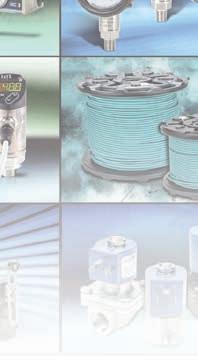



the #1 value in automation Order Today, Ships Fast! * See our Web site for details and restrictions. © Copyright 2022 AutomationDirect, Cumming, GA USA. All rights reserved. 1-800-633-0405 Sure-fire way to save money on your automation projects
FREE SHIPPING
FAST
it easier than ever to order direct from the U.S.!
Our shipping policies make
To see all products and prices, visit www.automationdirect.com All prices shown are U.S. Dollars
Over 35,000 quality low-cost components plus:
AutomationDirect.com
AutomationDirect has the industrial control products you need to keep your projects on time and under budget. Over 35,000 low-cost components including PLCs, HMIs, VFDs, sensors, pneumatics, wire, and so much more are at your fingertips to order 24/7. Access technical documentation and drawings, product configuration help, and account tools easily. And if you need extra help, just call or chat our helpful customer service stars during business hours. So don’t wait, buy direct today and save with AutomationDirect! FREE tech support
FREE shipping
FREE PLC training
•
•
AUTOMATION VENTION SEES EXPLOSIVE GROWTH IN 2022
Montreal automation company, Vention, announced the company experienced stellar performance in 2022 and looks to keep its foot on the gas with the release of new features for 2023.
Best known for its Manufacturing Automation Platform, the company’s online design tool allow companies to digitally build automation systems via a dragand-drop procedure and building blocks from Vention-built and third-party components certified to work together.
According to the company, demand for its novel machine building concept drove a record 2x booking growth for the company last year. In addition, its active customer base grew by more than 900 companies and its automation partner revenue grew by 2.9 times. Last year’s record results followed revenue growth of 964% from 2018 to 2021, the company says.
“Vention’s mission to democratize industrial automation has never been more relevant,” said Etienne Lacroix, CEO and Co-Founder. “With labor shortage, salary inflation and reshoring of production, manufacturers are looking for new, innovative solutions to automate their factory floor. Over the past years, Vention has helped more than 3,000 manufacturers automate their shop floor.”
The company also expanded beyond Quebec last year, opening a European headquarters and distribution center in Berlin, Germany and opened a new office in Boston. Vention also added 50 new component partners to its automation network including Groupe MCA, Gimic, Mid Atlantic Machinery, CIMTEC Automation, and Dominion Automation and Cross Automation, as well as robotic
Vention’s Manufacturing Automation Platform, an online design tool that allows companies to digitally build automation systems using building blocks from Ventionbuilt and third-party components.

vendors Universal Robots, FANUC and Doosan Robotics.
To financially fuel its path forward, Vention floated series C financing of US$95M in 2022, led by existing investor Georgian. New investor Fidelity Investment Canada ULC also joined the round alongside existing investors White Star Capital, Bain Capital Ventures and Bolt Ventures.
To continue its user growth, the company announced new software and hardware to its platform in the latter half of 2022. MachineLogic, for example, offers a code-free programming environment that includes features such as robot-path visualization, simultaneous motion, multi-controller programming and lambda functions. To assist deployment, the company’s new MachineCloud software provides stepby-step guidance via the digital twin data of the machine already present on its Manufacturing Automation Platform.
Beyond software, Vention has launched its industrial palletizer application built with robotics by FANUC. The platform also now offers a telescopic lift column component designed to increasing the reach of robot cells. The programmable column connects directly to Vention’s MachineMotion controller using a single cable. vention.io
AEROSPACE CANADA TO PROCURE 88 F-35 FIGHTERS

The Government of Canada announced it will procure 88 Lockheed Martin F-35A Lightning II aircraft to replace Royal Canadian Air Force’s fleet of aging CF-18 fighters.
In January, Defense Minister Anita Anand said the first four F-35s are scheduled for delivery in 2026, with the next six to follow in 2027, and the next six in 2028. The full fleet is expected arrive by the end of 2032, to coincide with phase out of the CF-18s.
In the meantime, Anand said Canada has procured Australian F-18s to supplement its existing fleet of CF-18 aircraft, which are also being upgraded
DESIGN NEWS UPFRONT
The F-35A Demo Team performs a flyby during the 2021 Canadian International Air Show in Toronto.
6 DESIGN ENGINEERING January/February 2023 DESIGN-ENGINEERING.com
Photos: © Vjom / Adobe Stock, Vention, Lockheed Martin, General Motors
under the Hornet Extension Project.
All in, the investment totals an estimated $19 billion, which includes the aircraft, as well as sustainment set-up and services for the aircraft, associated aircraft equipment, and the construction of modern fighter squadron facilities in Bagotville, Quebec, and Cold Lake, Alberta.
According Anand, the acquisition and initial maintenance of the F-35 could contribute more than $425 million annually to the Canadian economy and close to 3,300 jobs annually over a 25-year period, since participation in the Joint Strike Fighter program has allowed Canadian companies to ink nearly US$3 billion in contracts.
To date, more than 890 F-35s are currently in service by nine nations, operating from 27 bases worldwide. There are also more than 1,870 pilots and 13,500 maintainers trained on the aircraft.
www.lockheedmartin.ca


GM OPENS CANADA’S FIRST FULL-SCALE EV PLANT
At the end of 2022, General Motors and its EV subsidiary, BrightDrop, opened Canada’s first full-scale electric-vehicle manufacturing plant.
The facility is GM’s CAMI Assembly plant in Ingersoll, Ontario retooled to produce BrightDrop’s fully electric delivery vans. The first of its Zevo 600 rolled off the CAMI production line in December 2022.
“I am especially proud of the BrightDrop and CAMI teams working together to take the Zevo 600 from concept to commercialization in less than two years, making this the fastest launch in GM’s history,” said Marissa West, president and managing director of GM Canada.
GM began retooling CAMI in May 2022. Over the next seven months, the team installed entirely new production equipment covering 2 million square feet.
The company’s EV vans are based on the GM’s Ultium platform which encompasses a common electric vehicle architecture
and propulsion components like battery cells, modules, packs, Ultium Drive units, EV motors and integrated power electronics. GM says it has entered agreements to secure all battery raw material required to reach its goal of 1 million units of annual EV North American production capacity by the end of 2025. Production of Ultium EV battery packs is currently underway at the company’s first Ultium Cells LLC manufacturing facility in
In December 2022, BrightDrop’s first Zevo 600 electric delivery vans rolled off GM’s CAMI production line in Ingersoll, Ontario.

www.festo.com Industry Leadership Superior Quality Products Global Training & Support Innovate today for a new tomorrow Realize your vision with Festo’s approach to smart automation. Partner with Festo today. DES_Festo_JanFeb23.indd 1 2023-01-17 11:38 AM @design_eng_mag January/February 2023 DESIGN ENGINEERING 7
Ohio, with two more sites under construction in Tennessee and Michigan.
gobrightdrop.com
NVIDIA RESEARCHERS TEACH DEXTERITY TO ROBOT HAND VIA SIMULATION

While companies like Boston Robotics have shown how eerily nimble robots can be on their feet, accomplishing that same level of dexterity in a robotic end effector has proved more difficult. Robotic “hands” often have more joints to coordinate and consequently traditional control methods can’t reproduce human-level fine motor control.
One approach to boost dexterity is a technique called Deep Reinforcement Learning (RL), which trains a neural network to control the robot’s joints through trial and error. Unfortunately, this technique can require millions or even billions of samples to learn from.
To get around this limitation, and save wear and tear on a physical robot, NVIDIA researchers in the company’s DeXtreme project created the NVIDIA Isaac Gym, an RL training robotics simulator that obeys the laws of physics but can train a robot 10,000 times faster than in the real world, the company says.
Using Isaac Gym, NVIDIA researchers taught a robot hand how to manipulate a cube to match a provided target position and orientation solely in simulation before transplanting that control programming to a real-world robot.
Unlike previous attempts that required an expensive robot hand, an instrumented cube and a supercomputer, the DeXtreme project cut hardware requirements down to off-the-shelf components. The project used a four-fingered Allegro Hand, paired with standard RGB cameras and a 3D-printed cube with
NVIDIA’s DeXtreme project combines the company’s Isaac Gym, a robotics reinforcement learning technique and its PhysX simulation environment to teach robots dexterity.
stickers affixed to each face.
To train this setup, the researchers used its GPU-accelerated simulation environment Isaac Gym for reinforcement learning. NVIDIA PhysX simulates the world on the GPU, and results stay in GPU memory during the training of the deep learning control policy network. As a result, training can happen on a single Omniverse OVX server. According to the company, training using this system takes about 32 hours, equivalent to 42 years of a single robot’s experience in the real world.
According to the project’s research team, breakthroughs in robotic manipulation will enable a new wave of robotics applications beyond traditional industrial uses. By demonstrating that simulation and low-cost hardware can be an effective tool for training complex robotic systems, they hope to inspire others to build on their work. dextreme.org
ECLIPSE FOUNDATION RELEASES SPARKPLUG 3.0
The Eclipse Foundation announced the release the Sparkplug 3.0 specification, an open software specification that enables the use of MQTT to integrate data from applications, sensors, devices and gateways with most IIoT infrastructure.
According to the foundation, Sparkplug 3.0 is intended to clarify ambiguities in the 2.2 version and add explicit normative statements while maintaining backward compatibility. In addition, version 3.0 also marks the beginning of the specification’s transition into an ISO/ IEC standard.
At the same time, the foundation says its Sparkplug Working Group is launching a product compatibility program to ensure that Sparkplug-compatible products and implementations remain compatible and interoperable.
“Cirrus Link originally created Sparkplug to help industrial clients seamlessly integrate data between their sensors, devices or gateways and applications within an MQTT infrastructure,” said Arlen Nipper, President and CTO, Cirrus Link, and co-inventor of MQTT. “With the activities in the Eclipse Sparkplug Working Group, it is now growing rapidly as the standard for interoperability in IIoT.”
According to the foundation, the Sparkplug specification provides an open and freely available means for edge-of-network gateways or MQTT-enabled end devices and MQTT applications to communicate bi-directionally within an MQTT infrastructure.
www.eclipse.org
DESIGN NEWS UPFRONT
8 DESIGN ENGINEERING January/February 2023 DESIGN-ENGINEERING.com
Photo: NVIDIA
MISUMI
MANUFACTURER
MISUMI OFFERS CONFIGURABLE COMPONENT SOLUTIONS: A COST-EFFECTIVE, RELIABLE, AND FAST ALTERNATIVE TO OFF THE SHELF AND CUSTOM OPTIONS.
CUSTOM
Design a custom part to meet design specifications when speed and cost isn’t a factor.
• High Quality
• Fully Custom
• Uncompromised Design
OFF THE SHELF
Choose stock components when you need a part fast at the lowest cost.
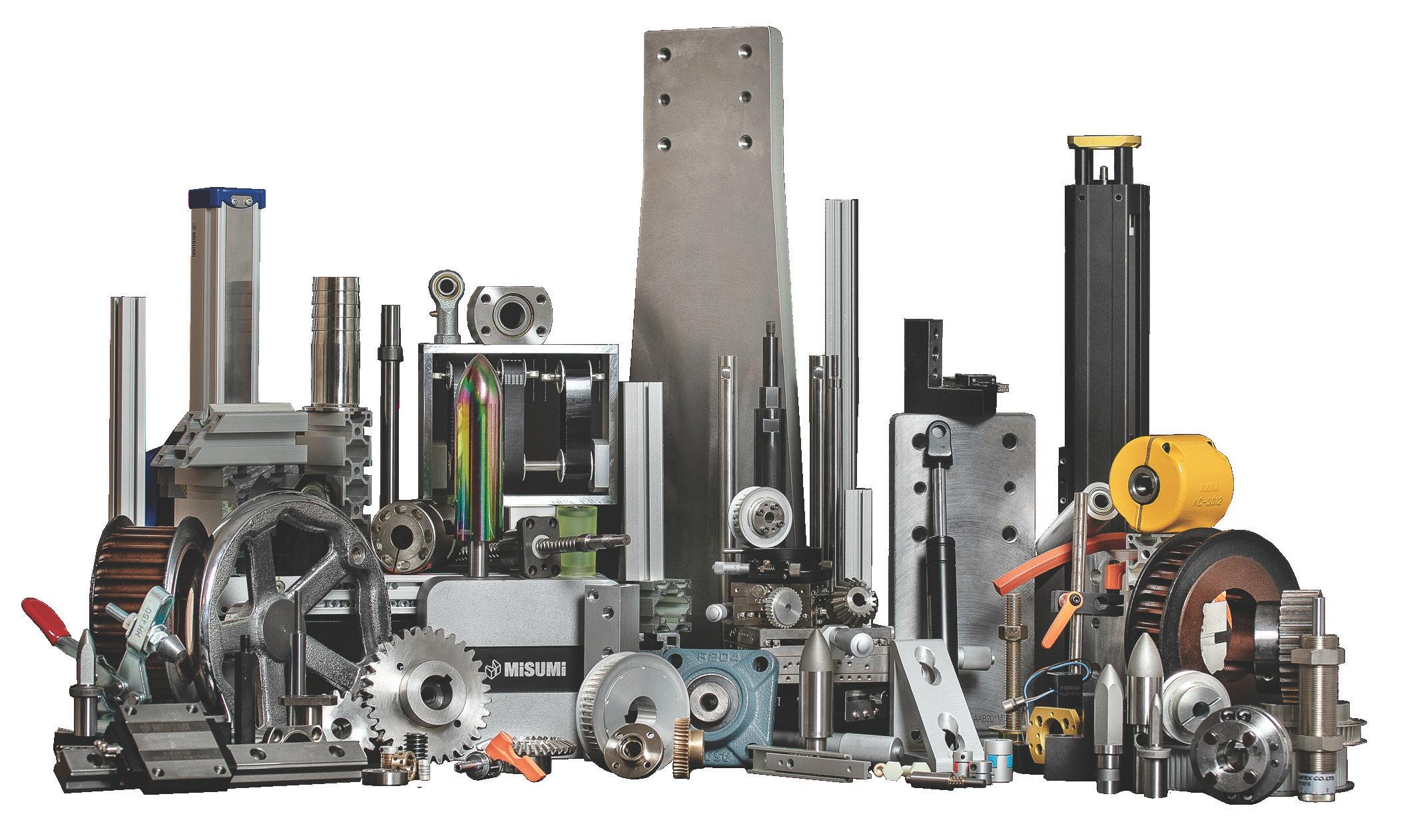
• Lowest Cost
• Fast

• Convenient
CONFIGURABLE

Configure the materials, dimensions, features and finishes you need online FAST!
• Fast and Easy
• Unlimited Selection
• Global Part Number



• 3D Model

• Low Cost
• Reliable Delivery
& DISTRIBUTOR
D L P F
MISUMI.INFO/CANADA
Autodesk’s Grand New Design
CAD giant reveals the company’s latest CAD in the Cloud strategy at annual user conference.
BY RALPH GRABOWSKI
Autodesk has, for the most part, seen itself as a software firm for architectural design. That favoritism was evident given the number of sessions at last fall’s Autodesk University 2022: 243 classes were offered on building design and construction; 74 were on manufacturing. In some ways, this is understandable, as the MCAD/CAE/CAM problem has largely been solved. Building construction, by contrast, continues to be hugely under-digitized. Look at any building site:Those aren’t iPads construction workers are carrying around.
Digging into the presentations at AU 2022, we learn that Autodesk is using MCAD’s success to move along building design. Figure 1 shows MCAD as part of the AEC design slate from Autodesk. The number of programs, however, can be overwhelming and even confusing. What, for example, might be the difference between Fusion 360 Manage and BIM 360 Ops? If that’s not enough, Autodesk has 85 other software programs on offer.
Still, not all of MCAD has been a roaring success. Sexy technologies like cloud-based CAD and generative design have found limited adoption; they aren’t the cash cows CAD vendors hoped they would become. Turns out, users prefer practical progress, like better drawing generation from linked 3D models or faster loading of very large assemblies.
Autodesk’s Next Stab at Cloudification
It was a decade ago when then-CEO Carl Bass bluntly stated all Autodesk software would be on servers by 2015: “The only way to use them will be online.” Phil Bernstein, then Autodesk’s vice president of building industry strategy, added, “Right now, we are moving some apps (collaboration and analysis tools) to the cloud. Our long-term strategy is to move everything there.”
It fell to Andrew Anagnost, at the time Autodesk’s senior vice president of industry strategy and marketing, to contradict his boss: “I cannot say why Carl Bass said that. The cloud is really important to us, but it is not the whole story.” He told me back then that the cloud would be an optional way to carry out tasks like analysis and translation.
In the end, the Anagnostian view (that cloud should assist desktop CAD) prevailed over the Bass-Bernstein view (that cloud should replace desktop); later, Anagnost prevailed further by becoming CEO after Bass stepped down.
Most CAD vendors today push some form of cloud version of collaborative software, collaboration being an area in which the cloud makes sense. Everyone on a project needs a common meeting point, whether working from home, in the office or on the field. Software running on a remote server can do that quite well, now.
During his Autodesk University 2022 keynote address, made to 19,000 in-person and online attendees in September 2022, CEO Andrew Anagnost offered not just one new cloud service, but three separate ones that he called “industry clouds”.
For manufacturing, there is Autodesk Fusion (a name easily confused with Fusion 360, which is for mechanical design). For architecture, engineering, and construction, he announced a separate industry cloud called, Autodesk Forma. The third,


FEATURE CAD REPORT
Autodesk CEO Andrew Anagnost introducing Autodesk Fusion, the CAD company’s latest cloud service, to the audience of Autodesk University 2022.
Figure 1: To bolster digitalization in the AEC market, Autodesk is adding MCAD software throughout its architectural production line.
10 DESIGN ENGINEERING January/February 2023 DESIGN-ENGINEERING.com
All photos: Autodesk
Autodesk Flow, is intended for media and entertainment users.










Autodesk’s “Grand New Design” then is three clouds to house all of design and production. The three are, however, promised for some point in the future. Anagnost’s talk was peppered with “will,” “our vision,” and “first offering.” The home Web page for these industry clouds provides little in the way of hard information, sadly.
That tentativeness is bit of a letdown, given that we went through a similar emotional ride during the previous AU, which highlighted the Forge programming interface. It too was described by provisional statements like “excited about the potential” and “making strides.” A year later, it remains unfinished, although one of the strides it made was being renamed “Autodesk Platform Services.”
So, what does this new not-360 Fusion do for MCAD users? Autodesk sees it connecting data from many software sources, and between many kinds of

users – management, designers and the shop floor. It is not one product, but many held together by the Autodesk Platform Services’ programming interface. Initially, Fusion 360, Fusion 360 Manage, Upchain and Prodsmart will



be part of Fusion, with more added later.






As a reminder, Upchain was acquired by Autodesk for its cloud-based PLM (product lifecycle management) and PDM (product data management), and Prodsmart for shop floor





THE RIGHT STAMPING. THE RIGHT WASHER. RIGHT NOW. BOKER’S WILL BE THERE. For over 100 years, nearly every industry across the globe has trusted Boker’s to provide quality components, world-class service and on-time delivery. REQUEST YOUR FREE 2023 CATALOGUE & CALENDAR bokers.com +16127299365 DES_Bokers_Feb23_CSA.indd 1 2023-01-23 3:33 PM
@design_eng_mag January/February 2023 DESIGN ENGINEERING 11
Formerly known as the Forge programming interface, Autodesk Platform Services will serve as the foundation for the company’s new industrial clouds: Fusion, Flow and Forma.
scheduling, purchasing and inventory management. Some of the MCAD functions promised by Anagnost include the following:
• Creating part designs automatically
• Minimizing part and assembly modeling via configurations
• Changing part sizes, loading conditions and tool paths with configurations
• Generating drawings and dimensions automatically
• Flowing all data relevant to a product’s development, from the design firm to the shop floor, including how it was designed, manufactured and how it performed
• Managing machining and fabrication processes
• Handling shop floor scheduling, purchasing inventory management
• Working directly with Fusion 360, Inventor, AutoCAD and Solidworks
• Connecting with plug-ins to non-Autodesk programs, like Rhino
The approach is not new to our industry. Siemens offers its CAD-neutral Web service Xcelerator, which is kind of like Fusion and Autodesk Platform Services combined. Graphics
board maker nVidia has its universal, “all are welcome” Omniverse environment.
The word Autodesk marketing chose to highlight the three new cloud services is “disruption.” The theme from AU was: Well, you survived the disruption of COVID, you can now survive the disruption of our new software. Anagnost even fit the word several times into one sentence:

“Unlike all the unwanted disruption that’s been thrown at us, I believe a disruption of the technology we use to do our jobs, a positive disruption, is probably long overdue.”
There is much customers do not know about Autodesk’s future for them, and so I checked with Autodesk to learn more about the new industry clouds. Four months after the big reveal, it was unable to provide me with more information.
Questions include: How much will these industry clouds cost? Are they glue to connect available software or bundles (i.e. Fusion + Fusion 360 + Upchain + Prodsmart)? Will they work only on Autodesk’s servers or for on-prem installations, as well? What is the future of desktop applications?
As for the date on which
industry clouds become available, Autodesk plans to release connections for data, teams and workflows gradually over the next half-decade or so. Of the three, Fusion is the furthest along. Even so, Anagnost warned, “Building them will take time, but we’re making huge progress...”.
When Autodesk first promoted the cloud, some believed we would experience unlimited computing power on the cloud.
What we got was a zigzag of products and policies as CAD vendors, including Autodesk, teetered between figuring out how to fund expensive cloud computing providers, such as Amazon, and the limitations inherent in Web browsers communicating with distant servers.
After a decade, the cloud has became very good at certain tasks, like any other technology. Now that realism has set in, customers are better attuned to the parts of cloud from which their operations can benefit.
For now, it’s Autodesk battling itself and its customers. The dream of an all-encompassing system for storing data in a single silo isn’t new. Autodesk faltered through earlier iterations with names like Navisworks, Quantum, and Project Plasma.
Its biggest failure was cloudifying its big three: AutoCAD, Inventor, Revit. AutoCAD Web is a pale imitation; Fusion 360 seems to lack the sales to replace Inventor; and by Anagnost’s own admission, no Web version Revit will ever happen.
Autodesk Fusion’s five-year timeline may provide sufficient runway to adapt to the transition or it might not. The last ten years have shown that a CEO saying “The only way to use [our software] will be online” doesn’t make it so. |DE www.autodesk.com
FEATURE CAD REPORT
Ralph Grabowski writes on the CAD software industry on his blog (www. worldcadaccess.com) and has authored numerous articles and books on CAD.
Autodesk’s marketing of its industrial clouds uses the word ‘disruption’ as a necessary positive.
12 DESIGN ENGINEERING January/February 2023 DESIGN-ENGINEERING.com
Photo: © Vjom / Adobe Stock
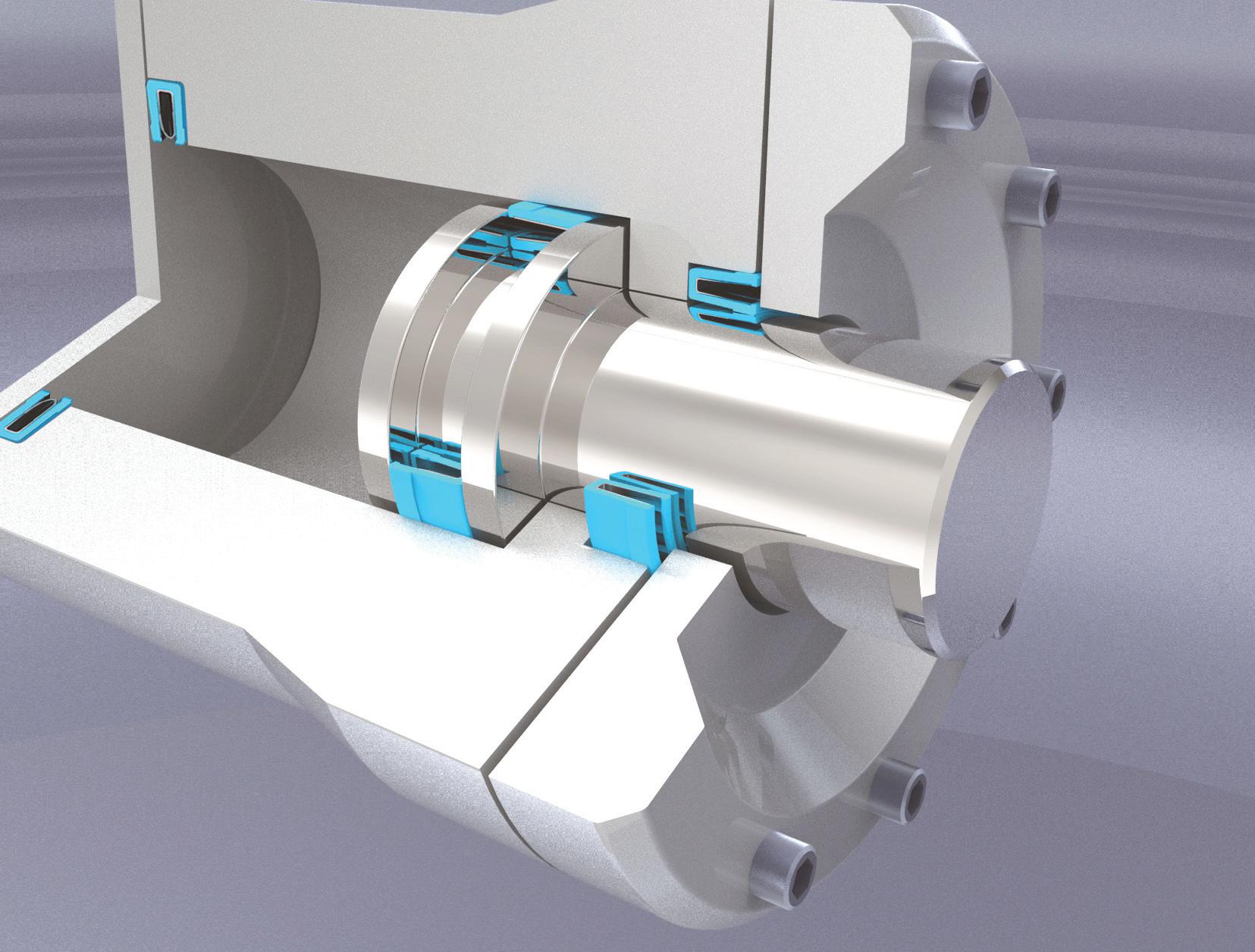







to access our new online catalog. To contact a Daemar 1-800-387-7115 or send piston seals ptfe seals variseal® u cups rod seals varilip® SEAL daemar.com 1.800.387.7115 Components that are essential to the performance of your product assemblies. Toronto Montreal Edmonton Essential components for industry Daemar’s lineup of Trelleborg Sealing Solutions provides design engineers with a wide range of seal styles to meet the performance demands of Industry. Manufactured in optimized polyurethane and PTFE based materials for exceptional wear resistance and no stick-slip characteristics.
ENGINEERING EMPLOYMENT TRENDS 2023
Randstad labor survey finds workers seek more than just tangible benefits in current job market.
According to Randstad’s annual Canadian labor report and salary survey, the impact of the pandemic will have lasting effects on employment trends. First and foremost, the Great Resignation continues years after its emergence in 2021.
According to a 2022 Gartner report, the pandemic produced a kind of mass mid-life crisis for many employees; the majority of those surveyed responded that the pandemic caused a reevaluation how important work should be in their life.
Another main factor driving employees voluntarily leaving employment, the HR consulting firm says, is the fact that they can. Widespread labor shortages leads employees to feel that finding a new job will be easier.
In turn, those employees who stay will more likely be required to pick up the slack and rise to increase performance demands, which can lead to burnout. According to Randstad’s report, four in 10 of those surveyed said they feel more burned out now than last year, despite a flexible working environment.
Due to the resultant labor shortage, plus rising inflation, employees are looking for higher wages. However, the prospect of and anticipated recession sometime in 2023 have caused employers to think twice about taking on new talent.
According to Randstad, this is a losing strategy since competitors may not follow suit. In addition to competitive compensation, the firm advocates creative benefits packages that better jib with the post-pandemic labor market.
Top Reasons Workers Quit
employers in the driver’s seat, the challenge will be finding top talent, the company says. Evolving trends, such as advancements in technology and shifts in regulatory frameworks, will require employers to hire highly skilled candidates with specialized experience.
What Employees Look For
In the meantime, however, experienced engineers will remain in high demand, especially mechanical engineers. Depending on location and industry, mechanical engineers can see starting salaries of $80,000 to $120,000 per year. At five to 10 years of experience, those numbers grow to a salary of $120,000 to $160,000 per year, with the high-end salaries concentrated in the oil and gas industry in Alberta, Ontario and B.C.
What employees want
Engineering bucks the trend
Despite the above, Randstad argues the engineering labor market will buck the trend, in that Canada will have a surplus of engineers in the future.
For example, from 2018 to 2028, Randstad estimates the number of mechanical engineering jobs in Canada will increase by 11,300 positions while 13,200 job seekers will look to fill them. Similarly, 26,500 civil engineers will chase an increase of only 18,900 civil engineering positions over the same time period.
While this estimate puts engineering
Beyond the tangible factors that attract employees (e.g. salary/benefits, etc) Randstad says flexibility is the new HR strategy watchword. A recent study the company conducted with Ipsos found that less than half of industrial and office workers surveyed (47% and 49%, respectfully) said they were satisfied with the flexibility their job allowed. In addition, a fourth of those surveyed said a lack of flexibility may make them switch employers.
Specifically, respondents said they want enough flexibility to use paid time off earned and to take time off in lieu of overtime. While on the clock, respondents said they would like to have the ability to set their work schedule and work hours. Others said they would like to set the number of hours they work each day based on their current workload.
|DE EMPLOYMENT TRENDS FEATURE 0 10 20 30 40 50 60 70 80 0 10 20 30 40 50 60 70 80
Higher salary: 62.5% Attractive salary & benefits: 71% Better benefits Work–life balance Job security Pleasant work atmosphere Good training More flexible schedule Career advancement Skills development 37.5% 68% 61% 60% 58% 34% 32.5% 23.5%
14 DESIGN ENGINEERING January/February 2023 DESIGN-ENGINEERING.com
Graph data adapted from Randstad’s 2023 Salary Guide.
Engineering Salary Guide 2023
The following salary data is adapted from Randstad’s 2023 Salary Guide, based on data generated by the Economic Research Institute (ERI) with validation by Randstad experts. All salaries are for manufacturing mechanical and automation engineers only. Amounts are expressed in thousands of dollars and represent annual base salaries (before benefits). Salary ranges quoted below correspond to the 25th and 75th percentiles for Entry (1–3 years), Mid (4–7 years) and Senior (8–12 years) levels. Randstad’s complete 2023 Salary Guide includes data for all engineering disciplines and related job titles, as well as data for 55+ municipal regions across Canada.
4 SASKATOON METRO AREA
Mechanical Automation
Entry: $74.2 - 98.6 $64.2 - 85.6
Mid: $84.4 - 114.1 $73.1 - 99.0
Senior: $96.8 - 130.0 $83.9 - 112.8
5 WINNIPEG METRO AREA
Mechanical Automation
Entry: $70.2 - 93.5 $60.8 - 81.0
Mid: $79.9 - 108.3 $69.2 - 93.8
Senior: $91.7 - 123.6 $79.4 - 107.0
For Randstad’s full report, including data for all engineering specialties and related professions, visit www.randstad.ca/salary-guides
1 SURRY, B.C. Mechanical Automation Entry: $76.1 - 100.0 $66.3 - 87.2 Mid: $86.1 - 115.3 $75.0 - 100.4 Senior: $98.2 - 130.7 $85.6 - 114.0 9 MONTREAL Mechanical Automation Entry: $72.1 - 96.1 $65.0 - 87.0 Mid: $82.1 - 111.5 $77.0 - 99.0 Senior: $94.3 - 127.2 $86.0 - 118.0 7 GREATER TORONTO Mechanical Automation Entry: $76.9 - 102.1 $66.7 - 88.6 Mid: $87.4 - 118.1 $75.8 - 102.5 Senior: $100.2 - 134.5 $86.9 - 116.7 8 OTTAWA METRO REGION Mechanical Automation Entry: $77.3 - 102.2 $67.2 - 88.9 Mid: $87.7 - 117.9 $76.2 - 102.6 Senior: $100.3 - 134.0 $87.2 - 116.6 2 GREATER CALGARY Mechanical Automation Entry: $81.7 – 108.1 $70.9 - 94.0 Mid: $92.8 – 124.8 $80.5 - 108.5 Senior: $106.1 – 141.6 $92.2 - 123.3 3 GREATER EDMONTON Mechanical Automation Entry: $78.4 - 103.3 $68.3 - 90.0 Mid: $88.8 - 119.0 $77.3 - 103.7 Senior: $101.4 - 135.0 $127.0 - 130.0 6 WATERLOO REGION Mechanical Automation Entry: $71.5 - 94.8 $62.2 - 82.3 Mid: $81.2 - 109.7 $70.5 - 95.1 Senior: $93.0 - 125.0 $80.7 - 108.4
1 2 3 4 5 7 6 9 8
Image: © Olli Turho / iStock / Getty Images Plus @design_eng_mag January/February 2023 DESIGN ENGINEERING 15
A DIFFICULT CLIMB
Swiss railway employs secure, high redundancy wireless network technology to revamp world’s steepest cogwheel railway.

The Pilatus-Bahnen railway was built over 130 years ago but is still the world’s steepest cogwheel railway. The train climbs the path from the Swiss village of Alpnachstad to the summit of Mount Pilatus at an elevation of 2,073m (6,801 ft). During the trip, with its average gradient of 35%, passengers are able to view flowering alpine meadows, striking rock formations and snowfields.
The railway has become one of Switzerland’s most successful tourist attractions. Because of its popularity and large number of passengers, the railway needed larger and faster rail vehicles equipped with modern technology.
The control system used in the original trains was based on mechanical and electromechanical control elements. For the new larger and faster trains, Swiss process automation and railway safety firm, Actemium LeitTec, installed an electronic train control system to connect the route’s trackside control units with its moving trains, using wireless data communication.
For this, the company developed a PbS (position-based signalling) wireless network to provide high levels of data availability and satisfy the railway’s exceptionally high reliability demands. Due to its experience in rail communications and its data communication products, Pilatus and Actemium turned to Westermo to meet the railway’s reliability and availability requirements.
“A project like this one has never been built before and is essentially a prototype,” said Patrick Blaser, operations manager and member of the executive board at Pilatus. “To be able to accomplish this project, we needed partners like Westermo who actively contribute their know-how and support us with planning.”
In collaboration with Actemium, Westermo engineers designed and installed the data network directly on the mountain. Based on a redundant
Ethernet ring architecture, the network consists of wireless and wired devices designed for maximum reliability.
To that end, the system employs FRNT (fast recovery network topology), Westermo’s ring protocol for high-availability Ethernet networks. The ring architecture ensures data transfer via other paths in the event of a device or network link failure.
Furthermore, to ensure that the network can be operated securely and is protected from the outside, a number of security functions, such as data encryption, port security, active firewalls and other mechanisms for a secure data network, were already taken into account in the concept and later implemented.
Westermo Ibex-RT-370 infrastructure access points were installed trackside to provide WLAN connection to the vehicles, along with redundant routing switches with firewall functionality in the stations. The network onboard the trains is based on Westermo Viper-212A managed routing switches and Ibex-RT-320 wireless clients that communicate over Wi-Fi with the trackside access points. This train-to-ground communication network setup ensures reliable communication between the trains and the control system.
In addition, a collision warning system
between the trains was implemented using Westermo wireless technology. A WLAN connection is automatically established between two vehicles when they approach each other. This connection allows the steering systems to exchange data, enabling them to travel virtually in tandem and avoid collisions.
There is often over 10 meters of snow on the Pilatus summit in winter. To protect the infrastructure from these masses of snow and water, it is partially dismantled in autumn and reassembled in spring. To simplify and streamline this process, a trackside radio equipment (TRE) box was developed, containing WLAN access points, antennas and power splitters.
Thanks to a sophisticated assembly and disassembly system, the boxes can be easily dismantled in the autumn and reassembled in the spring. This also ensures that the antennas mounted on the TRE box are correctly aligned again after reassembly.
Mount Pilatus is an extremely unique place, with its highest point over 2000 meters above sea level and exposed to extreme geological weather conditions. To ensure the installation was successful, all companies involved had to work closely together. Occasionally, work could not be carried out as planned due to geological or weather conditions, requiring a high degree of collaboration and flexibility.
“Throughout the project process, we were able to rely on Westermo and benefit from their expertise in secure, industrial networks and WLAN systems,” said Actemium Project Manager, Peter Tschan. “Together, we developed network concepts with integrated cyber-security. Additionally, Westermo was on-site during commissioning to support us. This saved us a lot of time and money.” |DE www.westermo.com
MOTION CONTROL FEATURE
This article was contributed by Westermo
Photo: © PILATUS-BAHNEN AG
16 DESIGN ENGINEERING January/February 2023 DESIGN-ENGINEERING.com
Pilatus Railways’ new trains depend on a modern wireless Ethernet network architecture.
The #1 Trade Show & Conference for Fluid Power, Power Transmission, and Motion Control
CO-LOCATED WITH CONEXPO-CON/AGG (two shows, one price)
The International Fluid Power Exposition (IFPE) is the place where engineers meet to:
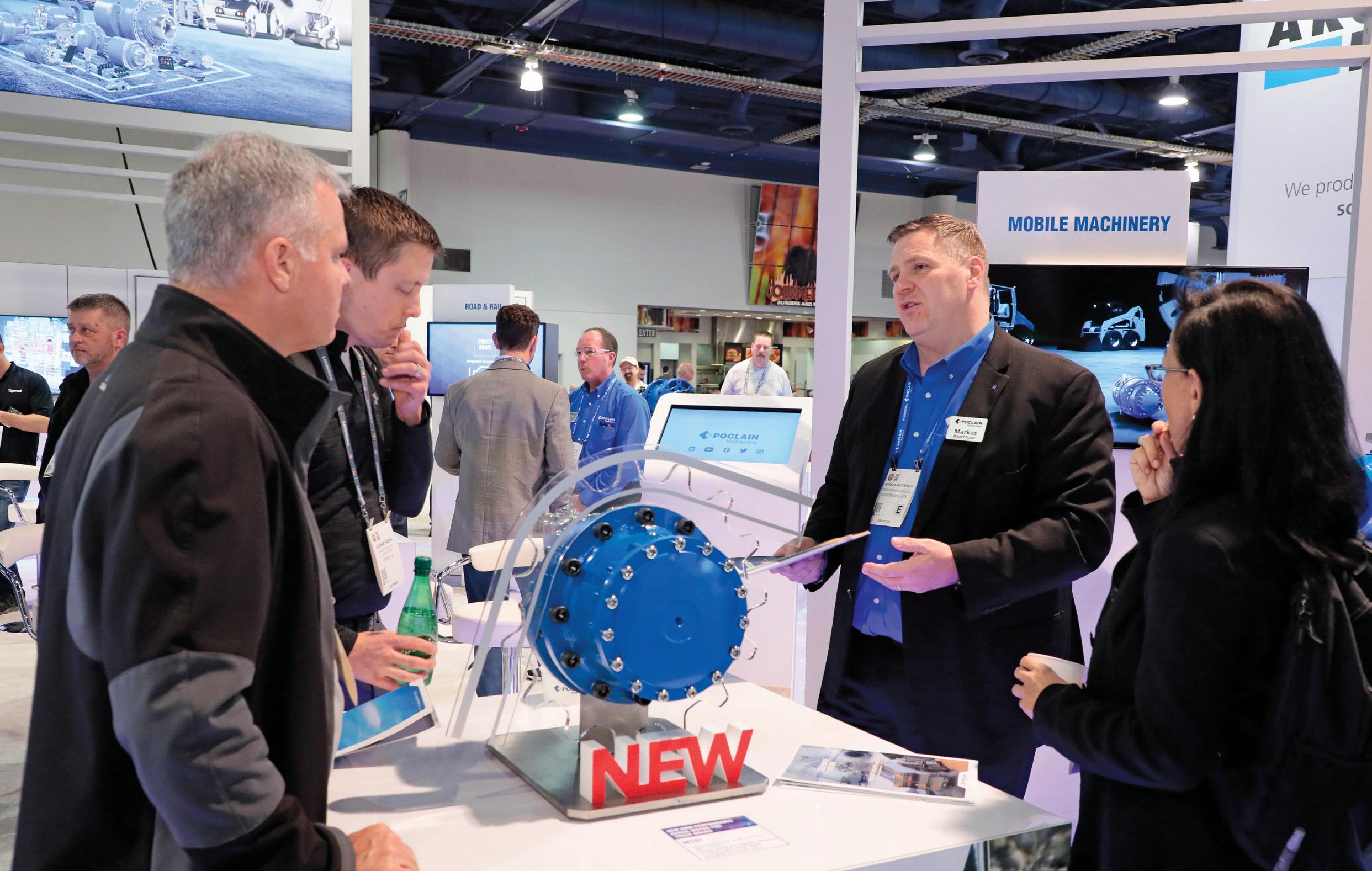
Spark new ideas with in-depth technical conversations with other engineers.
Discover solutions current suppliers can offer to your unique challenges.
Find new partners among suppliers pushing the envelope on what fluid power can do.
CONNECT WITH TOP MANUFACTURERS
Including Bosch Rexroth , Danfoss Power Solutions , Parker Hannifin , Poclain , IFM Efector , Hawe Hydraulik , Husco , and 375+ more!
Join your peers from these OEMs:
∙ Caterpillar Inc
∙ Volvo Construction Equipment

∙ Liebherr
∙ CASE Construction Equipment
∙ Komatsu
∙ John Deere Construction
∙ Doosan Bobcat
∙ KOBELCO Construction Machinery USA

∙ LBX Company
“ There’s no other show in the world I think that brings the OEM machine manufacturers and the suppliers as close together as this show. It’s a good place to meet and learn about what’s going on. In the Americas, in the Western Hemisphere, this is the show for fluid power.”

KEN ROSENBECKER SALES MANAGER NORTH AMERICA | WIPRO INFRASTRUCTURE ENGINEERING

IFPE only happens once every three years!
SAVE 20% OFF REGISTRATION Register now at IFPE.com and type AD20 in the Promo Code box
EXPO
INTERNATIONAL FLUID POWER
MARCH 14-18, 2023 LAS VEGAS, NV, USA
TSN IN REAL WORLD MANUFACTURING
In recent years, time-sensitive networking (TSN) has leapt from the pages of academic journals to practical applications in the real world. Companies that want to reap the benefits of this exciting technology must understand the needs of industry players and start to build TSN-enabled systems.
Traditionally, different equipment, interfaces and protocols presented serious challenges to transmitting, receiving and processing large amounts of data in a timely manner for industrial automation applications.
TSN overcomes these challenges by enabling time synchronization on the network so that all connected devices share a common time reference for all data to become available at a given point in time for specific tasks.
These TSN-enabled systems are highly reliable, since its built-in bounded low latency, in a deterministic networking environment, optimizes performance and security.

To achieve a high level of reliability, IEEE 802.1CB Frame Replication and Elimination for Reliability (FRER) works by sending duplicate copies of each frame over multiple disjoint paths, so even in the event of partial network failure, proactive redundancy still allows for seamless communication.
Another important step toward implementing TSN in industrial automation is to ensure the data can be transmitted in wireless applications.
As a lot of industrial equipment is mobile, true IIoT will not be possible without a wider array of TSN wireless applications.
Wireless TSN fleshes out the full potential of TSN as a truly unified and high-performance network infrastructure that allows all types of traffic to coexist.
How TSN helps
TSN is the key to smart factory automation because deterministic, real-time communication allows different equipment to work seamlessly together. As networks grow in size and complexity, TSN implements traffic management and prioritizes system resources to ensure that critical data gets delivered on time, which makes the network ultra-reliable and more secure.
Consider two use cases that showcase the capabilities of TSN. Use Case 1: Responding to market demands for advanced, integrated, and highly automated machinery, manufacturers aim to offer machinery that features built-in scalability, accelerated sensing and complex laser and machine control applications. As such, however, different proprietary networks belonging to
different components require seamless communication and integration to deliver optimal performance. Furthermore, the maintenance of these networks will present challenges for operators, especially when the machines are shipped abroad and training for operators is at times not followed through.
In this scenario, it wasn’t possible to transmit critical data on the same cable, due to the “first-in, first-served” nature of Ethernet. With standard Ethernet TSN infrastructure, however, traffic management now allows critical data to share networking resources and ensures data packet delivery. A TSN enabled managed switch, like Moxa’s full Gigabit TSN-G5008 Series, can connect multiple I/Os to the servo drivers and machine vision cameras. As such, it can make manufacturing networks, such as
IIOT FEATURE
How time-sensitive networking prioritizes system resources so critical data gets delivered on time.
18 DESIGN ENGINEERING January/February 2023 DESIGN-ENGINEERING.com
Photo: © Petrovich9 / iStock / Getty Images Plus
TSN-enabled systems feature built-in bounded low latency in a deterministic networking environment to optimize performance and security.

To make mass customization possible, manufacturers can deploy Ethernet switches, like Moxa’s TSN-G5004 and TSN-G5008 Series, to combine existing proprietary networks into a single TSN-capable network. Most importantly, manufacturers can achieve information technology (IT) and operational technology (OT) convergence, so as to reduce the number of processes required to make a product. As such, adaptive production, mass customization and production optimization are enabled because assets are managed through a TSN-enabled network, with which deterministic communication ensures effective control over the entire manufacturing process.
A simplified network topography also benefits operators because maintenance becomes easier and more cost effective. As operators now maintain a unified network instead of many networks with different protocols and requirements, training can be streamlined. Cabling, too, becomes more straightforward, contributing to lower maintenance costs.

Who TSN benefits
TSN brings efficiency, easier management and cost effectiveness to the world of industrial automation. Its deterministic communication, whether wired or wireless, contributes to the ultra-reliability needed for high-stakes and demanding industrial systems. As TSN requires a standard, unified network for different devices, IT and OT convergence offers fewer nodes, streamlined cabling and easier maintenance. These benefits are realized by a wide range of stakeholders from machine builders to system integrators to end-users.
With TSN technology, machine builders can leverage a competitive network infrastructure that allows the motion bus and information being sent across the network to be converged on the same cable. This simplified architecture can also reduce the number of nodes thereby saving overall costs and maintenance effort. In addition, from the performance standpoint, the cycle time of the control loop can be shortened, which makes
those of machinery manufacturers, compatible with TSN to reap the benefits of Industry 4.0.
Use Case 2: A shorter production cycle is beneficial to businesses because efficiency leads to lower costs and more flexibility. It also allows businesses to cater to a changing market and offer mass customized—and often higher margin—products, such as commercial-off-the-shelf (COTS) products.
For manufacturers, such efficiency and flexibility can only be achieved when various systems—including production, assembly lines and logistics—are on a unified network so changes and adjustments to the production and distribution processes can be implemented on short notice more effectively.
DES_Novotechnik_JanFeb23.indd 1 2022-12-08 9:55 AM
@design_eng_mag January/February 2023 DESIGN ENGINEERING 19
it possible to control more devices. Last, since TSN technology runs on a Gigabit network, the higher bandwidth is well-suited for adding more applications in the future.
For system integrators, the unified TSN network simplifies network and automation architecture by reducing cabling and engineering efforts. TSN’s ability to converge all proprietary
networking technologies into one single cable means that network planning and scale can be controlled and predicted, thereby reducing the total cost of ownership and saving maintenance efforts.
For end-users, TSN’s compatibility with existing networks means additional network gateways that connect to different proprietary systems are no longer required. In fact,
Rolling Ring
Zero backlash. Jam-proof design.
that compatibility enables easy data access so that the system can more easily optimize resources and effort. Compared to other existing networking technologies, TSN is also better equipped to prioritize critical packets over non-critical but high-bandwidth consuming applications, which reduces overall system downtime.
Last but not least, leveraging standard Ethernet technologies means that the latest cyber-security solutions developed for Ethernet are also available to TSN networks, offering greater protection and adaptability in an ever-changing threat climate.
Preparing TSN adoption
When it comes to implementing a TSN-capable application, a thorough understanding of the existing application requirements and network topology is a prerequisite to choosing the most suitable protocol and the right configurations for the switches and end devices.
• For applications in positioning & reciprocating motion
• Zero play – even during reversal
Uhing® Rolling Ring linear drives run on smooth, threadless shaft that won't clog jam. If the system is overloaded, the sh simply slips instead of churning and grinding The drive bearings are in constant contact with the shaft, even during reversal, thereby preventing backlash.



Example applications: metrolog y machines, ma terial handling systems, spooling equipment, packa ging & converting equipment
Many different sizes meet var ying requirements for axial thrust & linear speed
For more information call 1-800-252-2645
Email: amacoil@amacoil com www amacoil com





Some models feature mechanical control over speed and travel direction. No programming or electronic controls are needed
Consider an example that requires both PLC communications and image capture. This application would require transmitting two types of data to the same host computer. Using a combined network topology, it is clear that the video stream is sent from port 4 to port 1, while the controller sends the synchronization message to the master server from port 2 to port 1.
Protecting the control packet from the high bandwidth video stream requires configuring the necessary protocols on the network, including time synchronization (802.1 AS) and time aware shaper (802.1 Qbv) on the related components and ports.
The control packet is sent at 1 second cycles, 300µs for cycle date, and 200µs for time sync data while the remaining 500µs is running the non-cyclic data. The device can assign the corresponding VLAN ID to each slot to ensure that the cycle data will not be affected. After clarifying the behavior of the application, the last step is to configure the necessary configurations on the Ethernet switch and end device. |DE www.moxa.com
This article was supplied by Moxa
Amacoil,
Box 2228
Distributed by
Inc PO
2100 Bridgewater Rd Aston, PA 19014 Phone: 610-485-8300
IIOT FEATURE 20 DESIGN ENGINEERING January/February 2023 DESIGN-ENGINEERING.com
SMOOTH RIDE
BC-based manufacturer’s boat seat design reduces seafaring stress.
Outdoor adventure awaits in British Columbia. Snowing, snowmobiling, hiking and even a breathtaking walk on a suspension bridge bring joy to thousands of tourists every year in Canada’s westernmost province. Yearround, many outdoor enthusiasts see the sights of British Columbia as something to behold.
Boating in the Pacific Ocean and the Gulf of Alaska off the province’s coast is also a popular activity. KingFisher Boats, located in Vernon, British Columbia, manufactures a wide range of models that are used for an assortment of recreational purposes. Whether it’s a
BY THOMAS RENNER
weekend fishing excursion or getting the kids up for the first time on water skis, KingFisher manufactures a boat for just about any activity.
One other company in British Columbia is helping KingFisher and other boat builders with seats that are designed to protect crew members from the unforgiving shock of wave impact.
SHOCKWAVE manufactures seats for commercial and recreational use that are included in several KingFisher models. The seats are also used by many others, including the U.S. Coast Guard.

“The quality and performance of the SHOCKWAVE suspension product is unmatched, and we are glad we can offer owners a safe
and more comfortable ride,’’ said Mark Delany, director of sales and marketing at KingFisher.
The genesis of SHOCKWAVE’s shock-mitigating seats developed when company founder and CEO David Smith cruised from Victoria, B.C. to Glacier Bay, Alaska in 2002. Smith breezed down Canada’s Pacific Coast in only 10 hours, setting a speed record in the process, with far less physical stress compared to previous long seafaring journeys.
Now, law enforcement and border patrol vessels, search and rescue boats, and military branches use SHOCKWAVE seats. The seats improve the boating experience with a ride that
significantly reduces physical stress with a suspension system designed to stand up even in the choppiest waters.
Reducing Shock
At any speed, the physical stress extracted on boat operators can be significant. The faster the boat, the more likely the physical harm to the driver.
“If your seat isn’t designed to take abuse, you might be the one taking the abuse,’’ said Rob Pletscher, engineering manager at SHOCKWAVE. “Even at moderate speeds, traveling without seat suspension can cause cumulative back and neck/ pain injuries. Wave shock impact can be unforgiving, and over a long enough period, it can leave you debilitated and unable to take the boat out whatsoever.”
Engineers face the dilemma of designing seats that include a suspension system that maintains stability, reduces friction and allows for some latitude in movement.
“The biggest challenge we face is keeping things as tight as possible but also moving as freely as possible,’’ Pletscher said. “The biggest challenge is weighing those two. We must keep things tight enough so that the seat is not sloppy but also keep it free enough so that you can get better performance out of your seat. It’s a balancing act.”
In addition, the seats need to withstand corrosion in a saltwater environment and remain durable under the stress of high-impact movement. Designing boat seats that meet all of these requirements is indeed a challenging assignment.
Tuned in to tolerances
Designing shock-mitigating seats requires knowing the
POWER TRANSMISSION FEATURE
Sidney, BC-based SHOCKWAVE designs and manufacturers boat seats that absorb the physical stress commercial and recreational vessel crews experience in heavy seas.
@design_eng_mag January/February 2023 DESIGN ENGINEERING 21
All photos: SHOCKWAVE Seats
tolerances of the materials used. Like the members of any cohesive team, the components need to work together well.
“You need to be very careful with the components,’’ Pletscher said. “When you have components that interact with each other, you have to look at machining tolerances, minimums, and maximums for all the components that touch each other. You have to make sure there’s no interference because you can’t have two things occupy the same space at the same time, or else they’ll be jammed together.”
SHOCKWAVE’s engineers determined the proper give that allows for some movement of the seat while also keeping it stable. Tolerances that are too tight would create rigidity and lead to friction. Components that are too loose will result in instability of the seat. Finding the right values required painstaking research and testing.

“We spent a lot of time on the design side to make sure that we have the absolute minimum clearances between components while taking the manufacturing tolerances into consideration,’’ Pletscher said. “Then we look at components that are easier to manufacture at tight tolerances to help reduce the overall stack up, which is basically the addition of gap components.”
igus, the manufacturer of high-performance plastics, helped SHOCKWAVE solve issues with corrosion and tolerance preferences. Components from igus support suspension with limited friction and moisture absorption while also allowing for vertical and horizontal seat adjustments. Nearly 38,000 bushings from igus are used
annually by SHOCKWAVE.
“On our high-volume product line, the main issue we tried to solve was to get a bushing that didn’t swell when it’s exposed to water,’’ Pletscher said. “We wanted a bushing that could handle high loads but was also dimensionally stable so that the tolerances could be tight enough while also keeping the cost down.”
Linear guides from igus are used primarily in SHOCKWAVE’s commercial and military products.The guides are corrosion-resistant, durable, and like all igus products, maintenance-free and require no lubrication.
“A lot of the linear cars that exist on the market have steel balls inside the mechanism,’’ Pletscher said. “If you want to keep the profile low, you need some space because the steel ball can’t touch two surfaces at the same time. They’re not going to work properly. The igus slides don’t have any steel components, so corrosion is not an issue. And there are no rolling mechanisms. That allows for a lot tighter tolerances so that you don’t have that slop in the seat where it’s rocking from one side to the other.”
Components from igus have been included in SHOCKWAVE products
for 13 years. Prior to using them, SHOCKWAVE tried other components, including its own linear guides.
“We quickly realized it was not our specialty, and we would rather purchase high-quality components and focus on welding and fabrication, which is our specialty,’’ Pletscher said. “We tried some igus samples and liked the quality and superior performance they provided.” |DE www.igus.com
Thomas Renner writes on engineering and other trade industry topics for publications throughout North America.
POWER TRANSMISSION FEATURE 22 DESIGN ENGINEERING January/February 2023 DESIGN-ENGINEERING.com
SHOCKWAVE uses igus’ plastic bushings and linear guides (highlighted) that withstand saltwater corrosion, remain durable under high impact stress and maintain stability while allowing for some latitude of movement.
FLUID POWER PNEUMATIC ESSENTIALS
Festo has launched its Pneumatic Essentials program, an initiative designed to streamline ordering of 16 of the company’s fundamental pneumatic components. These components include air preparation, polyurethane tubing, one-way flow control valves, high flow valves, self-teaching proximity switches, mini slides, guided drives, ANSI NFPA cylinders and metric and imperial cylinders. According to the company, expedited shipping is fulfilled by Festo regional service centers. In addition to rebranding components, Festo also upgraded existing products and built new lines, including the SDBT-MSX programmable proximity sensor and the company’s DGST pneumatic mini slide. In addition, its double-acting ADN-S cylinder is 36% shorter and 20% lighter than similar actuators, the company says, and its metric DSNU-S cylinder is 40% slimmer, 35mm shorter, 50% lighter than its ISO DSNU counterpart but retains the same bore and stroke length. www.festo.ca
HYDRAULIC CYLINDERS
AutomationDirect announced that it has entered the hydraulic components market with the addition of its Peninsular hydraulic cylinders. According to the company, the double-acting cylinders are interchangeable with other NFPA hydraulic

cylinders. The cylinder line’s available bore sizes include 1-1/2, 2, 2-1/2, 3-1/4 and 4 inches with stroke lengths from 1 inch up to 24 inches and working pressure to 3,000 psi. All models are double acting (two ports - one in the head and one in the end cap) and feature a ductile iron rod bearing. Available accessories include mounting brackets and hardware to ensure a fit as a replacement cylinder on existing equipment.
www.automationdirect.com
SOLENOID CARTRIDGE VALVE
Danfoss Power Solutions has launched its SLP13, a two-way, two-position poppet-type solenoid valve. The valve features patent-pending technology that reduces power consumption (from 29 watts to less than 10 watts) while increasing flow rating, the company says. The valve is available in size 10 with a nominal flow rate of 79 liters per minute (21 gallons per minute) and pressure rating of up to 350 bar (5,000 psi). The reduced power consumption allows the stabilized temperature of the valve’s coil to be reduced by nearly 50%, the company says, while the valve’s architecture

allows approximately 1.8 times more flow in the same cavity compared to conventional products.
www.danfoss.com
PRESSURE RELIEF VALVES

Emerson has released its Crosby J-Series pressure relief valve (PRV) product line, which features a balanced diaphragm that eliminates the need for bellows in PRVs, while providing balanced operation against backpressure. It also features bellows leak detection to allow for remote detection of bellows ruptures. According to the company, the valve’s design extends its backpressure limits from 60% to 80% and increases the Kb backpressure correction factor by up to 15%. The valve’s bellows leak detection feature consists of a backup piston and a Rosemount wireless or wired pressure transmitter. The company says the backup piston can reduce emissions by over 90% in the event of a bellows rupture. The pressure transmitter provides instant timestamped notification of bellows failure and emissions volume data in real time.
www.emerson.com
MOTORS
(0.60–2.68 hp) with torque from 3.1–14 Nm (2.28–10.32 ft-lbs.). The line is rated IP66/67 for the motor (IP69k for the housing) due to its 1.4404 (AISI 316/316L) stainless steel housing, with EPDM seals and bearing grease with NSF H1 approval. The motors are designed for the 3-A (U.S.) and EHEDG (Euro) requirements of the food and beverage industries. The line also includes one-cable connection and a 22-bit multi-turn standard absolute encoder. Options include a holding brake, stainless steel shaft with or without feather key, cable tail and a Motion Connect coupling.
http://usa.siemens.com
WASHDOWN SERVOMOTOR
Siemens introduced its SIMOTICS S-1FS2 line of washdown servomotors, offered in power ratings from 0.45–2kW
PLANETARY GEARMOTORS
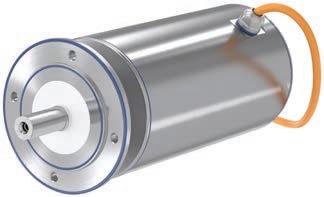
Applied Motion Products introduced its PH Series of mini planetary gearmotors designed to pair with small step motors in NEMA 8, 11, and 14 frame sizes. According to the company, they offer an increase in torque and better inertia matching. The line is offered in three frame sizes: 22, 28 and 35mm and standard ratios from 4:1 to 36:1. Its gearhead can accept input speeds up to 6,000 rpm. The line also features precision cut gears and an all-metal construction.

www.electromate.com
LINEAR MOTOR MAGNETIC TRACKS
ETEL has introduced its MWD+, a track with stronger magnets for the company’s existing LMG and LMS linear motors that enables up to 15% higher

IDEA GENERATOR NEW PRODUCTS @design_eng_mag January/February 2023 DESIGN ENGINEERING 23
continuous and peak forces, the company says. All MWD+ magnetic tracks share the same physical profile as their MWD counterparts. Because of this, a user can increase performance by either upgrading to MWD+ or going from the LMG to an LMS motor which has extra height but otherwise shares the same mechanical profile and magnet tracks. Both options allow ETEL component users to increase system performance with minimum mechanical changes, the company says. www.heidenhain.us
CONTROLLERS
SINGLE AXIS MOTION CONTROLLER
Galil released its DMC-3x01x series of single-axis motion controllers. It uses a 32-bit RISC processor and connects to a stepper or servo motor amplifier of any power range and can be purchased with an internal 800-Watt brushless sine drive or microstepping drive. Motion modes include point-to-point positioning, position tracking, jogging, contouring, electronic gearing and ecam. Its two daisy-chain-

®
able Ethernet 100 Base-T ports support TCP/IP, UDP and Modbus TCP master protocol for communication with I/O devices. It also supports encoder feedback up to 15 MHz and concurrent execution of four programs. It features eight uncommitted, isolated inputs and four isolated outputs, including two uncommitted 12bit 0-5V analog inputs and one uncommitted analog output. Standard power input is +/-12V and 5V. www.electromate.com
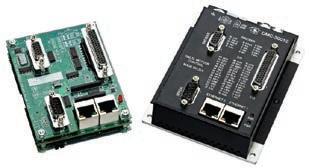
PLC CONNECTIVITY MODULE

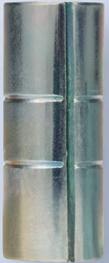
Softing has released its tManager connector designed to link Rockwell PLCs with PostgreSQL databases. tManager is a ControlLogix or CompactLogix PLC module that enables bi-directional data movement between the PLC and databases or cloud. Inserted into the ControlLogix PLC chassis, the module can move Logix tags from the PLC, collect tags from other PLCs and move tags to the PostgreSQL database for monitoring, storing, analytics, high-speed sorting or recipe downloads. Other tManager modules connect Rockwell PLCs to databases such as MSSQL and ORACLE, and cloud applications such as AWS IoT SiteWise, Microsoft Azure, Google Cloud and IBM Bluemix. http://industrial.softing.com
CONTROLLER PROGRAMMING





WAGO announced it is integrating the manufacturer-independent automation software, Codesys 3.5, as a programming option in a set of select PFC200 controllers. This software will help develop control code and visualizations








for both simple and complex applications, the company says. The Codesys 3.5 upgrade gives users access to fieldbuses including EtherCat Master, ModBus TCP Master and Server as well at Ethernet/IP Master and Adapter. Built-in security options include role-based permissions and file encryption. Users of WAGO’s e!COCKPIT software can convert their applications to this new software.

www.wago.us





ACTUATORS






VERTICAL LIFT STAGE
Optimal Engineering Systems (OES) introduced its AT20-600 series of motorized vertical lift stages that offer a vertical lift of 600mm. Constructed of black-anodized aluminum alloy and steel shafting, the 600mm by 600mm stage table line weighs 45kg and is 610mm high in its lowered position. It center mounted lead screw has a transmission ratio of 663 microns per motor revolution. The AT20-600-01 model, driven by a two-phase stepper motor, features a repeatability of 5 microns, positional accuracy of 20 microns and has a knob on the motor for manual adjustment. The AT20-600-02 and AT20-600-03 are driven by a brushless DC servo motor and a DC servo motor, respectively. Both incorporate a quadrature incremental encoder. The AT20-600-04 is driven by a two-phase stepper motor with a quadrature incremental encoder.

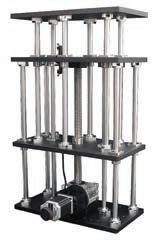

www.oesincorp.com



ad-de-qtr-cmpl-feb2023-o.indd 1 1/19/2023 3:42:59 PM DES_Spirol_Feb23.indd 1 2023-01-20 9:10 AM
IDEA GENERATOR NEW PRODUCTS 24 DESIGN ENGINEERING January/February 2023 DESIGN-ENGINEERING.com
ELECTRIC LINEAR ACTUATOR

SMAC has introduced its LPL Series 125, a low-profile electric linear actuator that uses the company’s moving coil linear servo motors. The series offers programmable control of speeds, positioning down to microns and forces from 0.1 Newtons up to 250N. The actuators also provide real-time feedback for tracking, performance and quality control. According to the company, the LPL Series actuators also have high cycle rates, are energy-efficient and have a lifespan of more than 100 million life cycles. The LPL series is similar to SMAC’s LDL and LBR Series actuators, which are also used for robot end effectors.
www.smac-mca.com
NETWORKING
designed to match the well-known manufacturer standards.

www.igus.com
ETHERNET SWITCHES
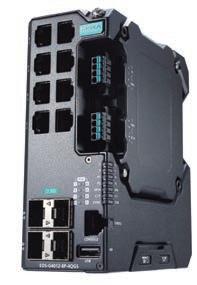
Moxa launched three Ethernet managed switch series. Each supports Turbo Ring and Turbo Chain, dual isolated redundant power
supplies and STP/RSTP/MSTP.
The EDS-4000/G4000 Series encompasses 68 models ranging from 8 to 14 ports with features such as 90-watt 802.3bt PoE, 2.5 GbE connectivity and compliance with the IEC 62443-4-2
HYBRID CABLES
igus has released two hybrid power and data transmission cables. The first is the CF280.UL.H401 with PUR jacket suitable for Bosch Rexroth’s MS2N series of synchronous servo motors. The other is a hybrid cable for Siemens SINAMICS S210 drives, now with PVC outer jacket. In total, igus carries more than 30 different types of continuous flexing cables which consists of two series: CF280.UL with PUR outer jacket and CF220.UL with PVC outer jacket. PVC is suited to energy chain applications with high cycle numbers in dry areas. It has a working temperature range of +5 to +70°C. Halogen-free PUR exhibits notch and oil resistance suited to energy chain applications with high oil loads. It has a working temperature range from -25 to +80°C. The chainflex cables are available from stock, sold by the meter, as harnessed products, and are


DES_RotoPrecision_JanFeb23.indd 1 2023-02-01 2:52 PM
@design_eng_mag January/February 2023 DESIGN ENGINEERING 25
security standard. The RKS-G4028 Series is available in 22 models with up to 28 full Gigabit ports and 802.3bt PoE++ support. The switches also comply with the IEC 62443-4-2 and IEC 61850-3/IEEE 1613, plus IEEE 1588 PTP for high-precision time synchronization. The MDS-G4000-4XGS Series offers models with up to 24 Gigabit and four 10GbE Ethernet ports. www.moxa.com
SENSORS
ROTARY SOLENOIDS
Magnetic Sensor Systems (MSS) introduced its R-09-150 CCWM series of counter clockwise, forward-shaft-extension rotary solenoids that features 18

different winding configurations. The 38.1mm diameter solenoids are 22.098mm long and have two M4X0.7 threaded studs. The shaft has 40 degrees of counter clockwise rotation, extending 13mm. The line can be specified with a choice of AWG winding of 21 to 37 gauge. Specifying a different AWG for the windings allows for performance control of a solenoid with respect to duty cycle, current supplied and torque. The shaft is supported by two precision radial ball bearings.
magneticsensorsystems.com
INDUSTRIAL ENCODER
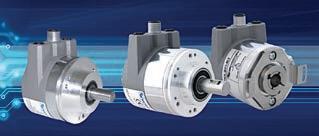
Wachendorff has added its WDGA58F encoder, with the EtherNet/IP protocol, to its range of Ethernet-based
encoders. ODVA certified, the encoder has a sensor minimized to an installation depth of 46.5mm. Its resolution in single and multi-turn (single-turn 16 bit, multi-turn 43 bit) can be individually configured via an integrated web server. It has an operating temperature range from -40°C to +85°C, shock 1,000 m/s² or vibration 50 m/s² at 10-2000 Hz. The devices with hollow end shafts eliminate the need for additional couplings; models with shafts are compatible with bearing loads of up to 400N.
wachendorff-automation.com

solder connections in circuit board production.
www.automationdirect.com
PRESSURE TRANSDUCERS
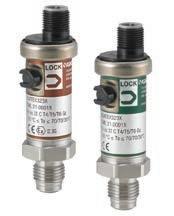

Ashcroft has released its ZT12 and ZX12 high-purity transmitters, with ATEX and IEC safety approvals for hazardous locations. The two models feature a compact size designed for high-density mounting along with 316L stainless steel wetted parts. Other features include 20μin or 7μin Ra surface finish options and 9⁄16 -18 UNF Male/Female fixed, swivel and flow through process connections (compatible with ¼ VCR fitting) with dead end or flow-through designs. They are 100% helium leak tested, cleanroom packaged and nitrogen-purged before shipment. They are available in gauge, compound and absolute ranges.
www.ashcroft.com
SMART VISION SENSOR
AutomationDirect has added the Datalogic Smart Vision sensor, an intelligent system built around a multiprocessor platform and featuring embedded artificial intelligence technology. The Smart-VS sensor has a 50-150mm operating distance and features a red LED pointer and a white polarized light illuminator. The sensor’s cable exit connections can be rotated to accommodate a variety of installation configurations. The model can be used to check production output for flaws or verify an object’s positioning before entering the next phase of production. Applications include part orientation for pick and place systems, verifying proper application of tamper-proof seals, or checking
LVDT SIGNAL CONDITIONER
NewTek Sensor Solutions now offers its NTC6000, a signal conditioner that pairs with AC-operated linear and rotary position sensors. It features LED front panel null indicators and push buttons to set zero and full-scale output positions. It also offers automatic excitation synchronization for multiple unit systems. The conditioner also incorporates a two-wire RS-485 digital communications port and offers hot swapability. Digital outputs can include CAN Bus, Modbus and RS-485. The DIN-Rail mountable unit is RoHS compliant and CE-certified.
www.newteksensors.com

DES_Mocap_JanFeb23.indd 1 2023-01-10 11:07 AM
IDEA GENERATOR NEW PRODUCTS 26 DESIGN ENGINEERING January/February 2023 DESIGN-ENGINEERING.com
Langley, BC
April 12, 2023
Langley Events Centre
Winnipeg, MB
May 2, 2023

Victoria Inn Hotel & Convention Centre
Drummondville, PQ
June 7, 2023
Centrexpo Cogeco

Drummondville
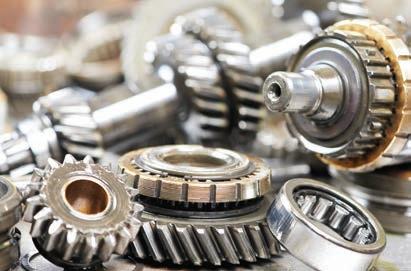
Mississauga, ON
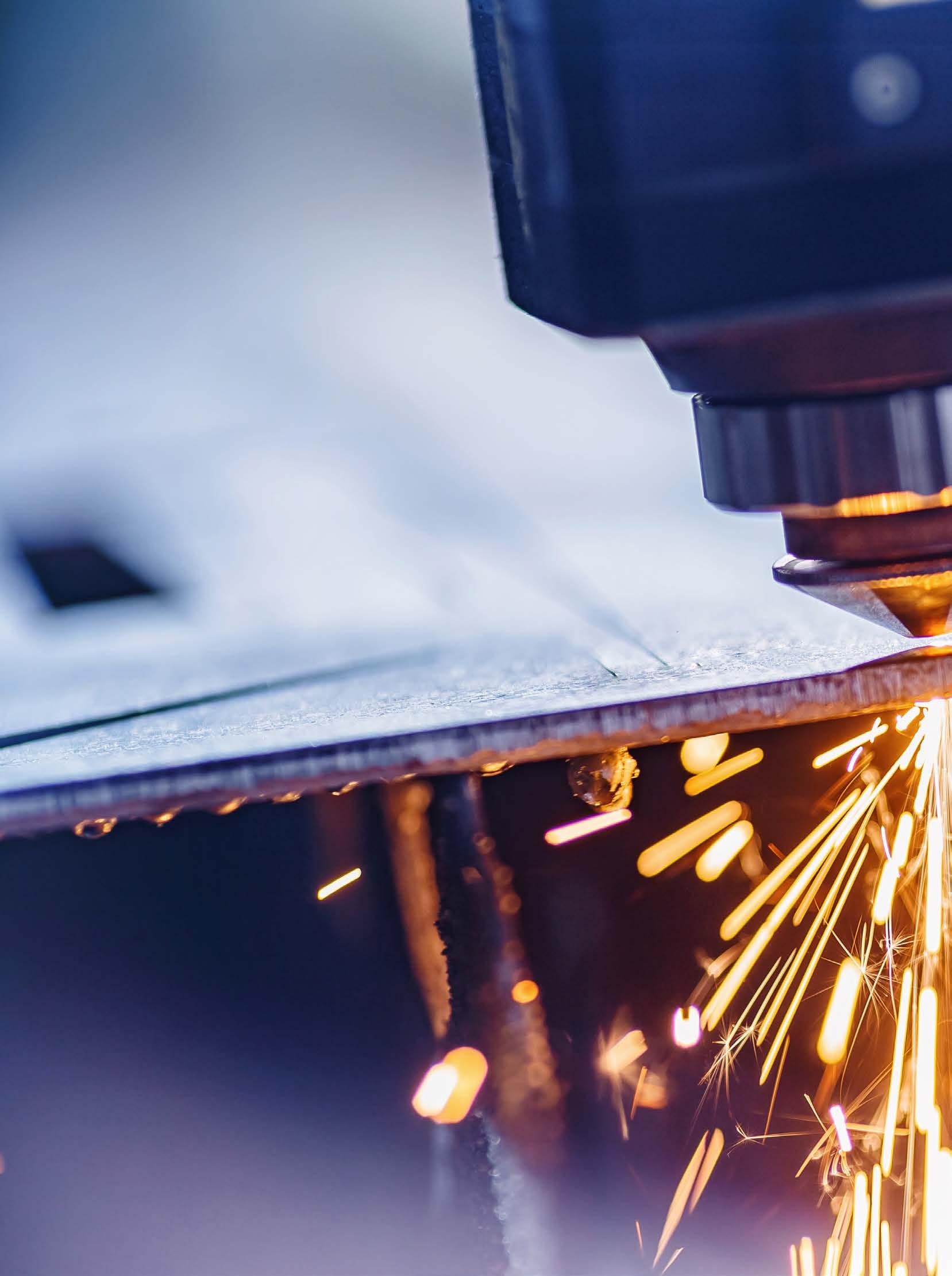
September 7, 2023
Mississauga Convention Centre
An effective forum for face-to-face interactions where engineers, product developers, machine builders
systems integrators can discuss, network, solicit advice and ‘kick the tires’ on the latest technologies and applications that drive your business. DEXEXPO.com FREE ADMISSION FOR ATTENDEES! REGISTRATION NOW OPEN FOR OUR 2023 DATES To discuss exhibit options please contact: Paul Burton Senior Publisher 416-997-0377 PBurton@annexbusinessmedia.com Ilana Fawcett National Account Manager 416-829-1221 ifawcett@annexbusinessmedia.com
and
Kathryn Swan Associate Publisher 647-339-4880 KSwan@annexbusinessmedia.com
Improve what moves with igus motion plastics ®






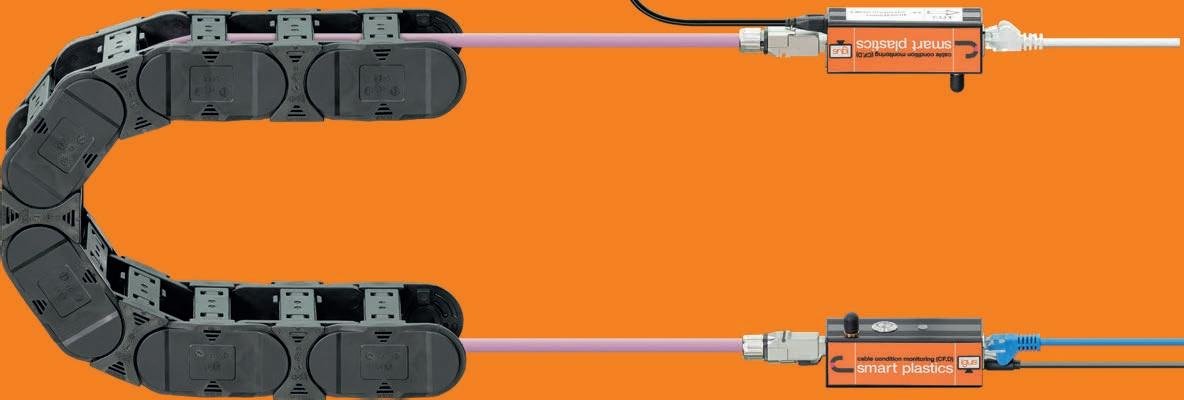
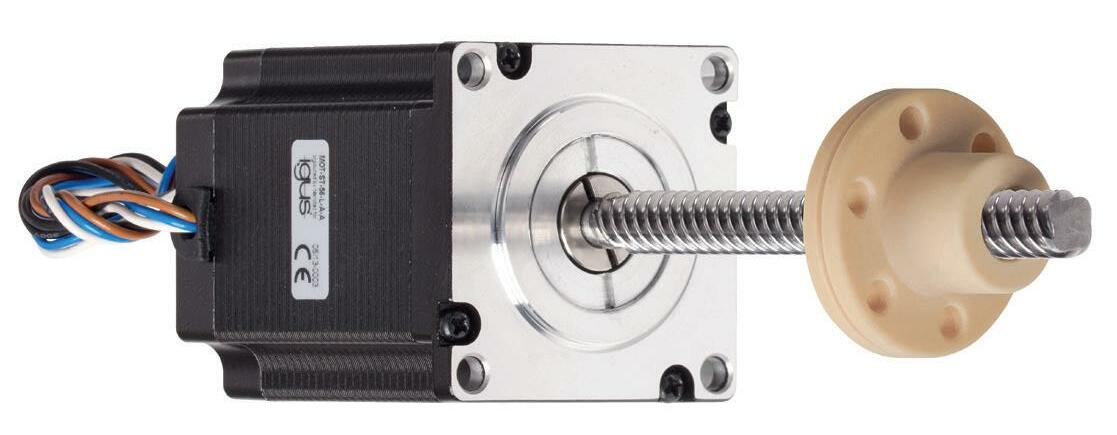




Long-lasting, dry-running plastics for longer life


Our engineered polymer blends are comprised of base materials for wear resistance, reinforcing fibers for high forces, and solid lubricants that eliminate the need for external oil and grease. In addition to being dry-running, our tribologically-optimized polymer blends are maintenance-free, lighter than metal, and resistant to dirt, dust and chemicals.




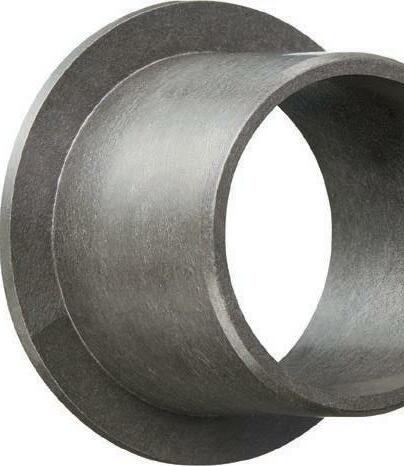
Manufacturing | Packaging | Automotive | Robotics | Food & Beverage | Material Handling



































































































































































